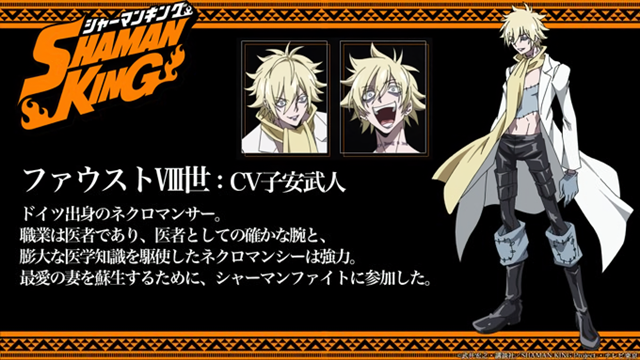An Invigorating New Interpretation of Anne

Lucy Maud Montgomery’s Anne of Green Gables book series is a beloved classic that has been adapted many, many times before Anne Shirley. There have been several films, a Netflix series, and even a vlog-based web series adaptation. In Japan, the story has long been cherished and received an anime adaptation, Akage no An, in 1972.
Though I have not seen the previous anime, I had high expectations for Anne Shirley as a fan of the books and the other television adaptations. At the same time, I couldn’t help but doubt that it could possibly reach its full potential. Multiple adaptations mean there are multiple preexisting successes to compare it to, and I couldn’t shake the thought that the creative liberties that could be taken with the story had likely already been explored.
A minute into watching the first episode of Anne Shirley, any worries that I had about this being a bad adaptation dissipated. This was a gorgeous, gorgeous episode. The whimsical premiere of Anne Shirley made me laugh, made me cry, and gave me the much-needed reminder that there is so much to love about the world.
Anne Shirley brings us into the world of 11-year-old Anne, an exuberant, talkative orphan who arrives in Avonlea to live with the Cuthbert family at Green Gables. There’s only one problem: the Cuthberts had planned to adopt a boy to help them out on their estate, and when they realize they’ve accidentally adopted a girl, they are not as keen on keeping her. In Anne’s short time at Green Gables, the timid Matthew Cuthbert and his stern, orderly sister Marilla find their hearts softening at her sincerity and wild imagination. At the end of the first episode, the two decide to let Anne stay a little longer in their abode before they make their final decision on whether to keep her or send her back to the orphanage.
Especially in the beginning, the story of Anne of Green Gables focuses on how Anne alters the perspectives of the people around her. The first episode of Anne Shirley highlights this ingeniously by literally playing with the perspectives of the shots, showing moments from Matthew’s and Marilla’s point of view that capture how Anne’s influence makes them see the world in a new light.

Out of the two Cuthberts, Matthew meets Anne first when he goes to pick her up at the train station. Though he’s dumbfounded at the fact that she’s a girl, he can’t find it in himself to leave her at the station overnight, so he takes her on his horse-drawn cart back to Green Gables. At one point on their journey, they traverse a dense forest along a red dirt road. What makes the road red, Anne asks? Matthew doesn’t know — never seems to have questioned this in his decades of living here — and admits his ignorance. Anne doesn’t despair at his lack of answer; if anything, it makes her more excited. The fact that there’s still so much to learn about the world, she tells Matthew, makes her feel lucky to be alive.
As she says this and looks out at the forest in wonder, Matthew follows suit, looking up at the trees. There, the animation shifts to his point of view and lets us take it all in with him: the soft rustling of the wind, the pockets of light shimmering through the interstices of the branches, how each leaf is stroked a different shade of green. It’s only shown for a breath, but it’s a shot that wholly conveys Anne’s positive effect on Matthew’s outlook.

A similar change in perspective happens with Marilla, specifically regarding her opinion of Anne, when the two travel to see the organizer of the adoption and ask how the mix-up happened. Marilla, who unlike Matthew is rather annoyed by Anne’s rampant imagination, asks Anne to talk about herself instead. To her surprise, the eager Anne suddenly deflates, her tone losing enthusiasm as she obliges with the description of her late parents, her time at the orphanage, her laborious tasks in her previous foster families. As they ride along the lake’s shore, Anne’s eyes wistfully trace the trajectory of a gull soaring above the water, and she swiftly switches the topic of conversation. Would you like to be a gull, Marilla? I think I would.
When Anne says this line, the animation positions us in Marilla’s point of view. From where she’s sitting, Marilla can’t fully see Anne’s face — only a sliver of her pensive gaze is visible, and her lips are completely hidden from view. This obfuscation of Anne’s mouth emphasizes how, despite all of Anne’s ecstatic yammering, there’s a swath of unspoken affliction trapped away in her young, meager body. In this moment, Marilla realizes that Anne’s optimism is a sign not of her immaturity, but of her attempted resilience. Her way of being like the gulls, free to roam the world and make every part of it her home.

When an adaptation manages to capture the essence of the source material and also elevate it through its creative liberties, it’s hard not to get excited about it! Truly, I could go on and on about all of the impeccable animation choices in these 24 minutes. In addition to the shifts in point of view, the animation adds another layer of enchantment through its painted backdrops. These contrast with the animation style of the characters, their movement against the delicate brush strokes in the background making it look like a pop-up storybook come to life.
Then there’s Anne’s unabashed sincerity that you can’t help but get a little choked up over: Anne’s speechless awe when she and Matthew traverse through the aisle of white blossom trees, a sight she desperately reaches out to touch, to sense it not in her imagination but in this real, beautiful world. Anne embroidering the forgotten “E” on her name tag in red, even though she hates that her hair is this color, because despite it all, it’s a part of what makes Anne, Anne. Every one of these choices made me view this story in a new light, and made me fall in love with Anne all over again.

Finally, I’d be remiss not to mention Anne’s voice actor Honoka Inoue, whose voice here is the epitome of whimsy. Not only does she perfectly articulate Anne’s infectious wonder, but she also tactfully delivers Anne’s more nuanced emotions. Her delivery of perhaps the saddest line in this episode — How can you call it a good night when you know it must be the very worst night I’ve ever had? — immediately made a lump well up in my throat. I’ve read this line several times before and heard it in other Anne adaptations, but none of those iterations capture this visceral, juvenile anguish quite as well as Inoue does.
This is only the beginning of Anne Shirley’s journey, and there are so many questions to be answered. Will Matthew and Marilla let Anne stay at Green Gables? Who else will she meet during her time in Avonlea? Though I know the answers as a fan of the original story, the magnificence of this first episode has me excited to see how the adaptation will weave its unique threads into the remaining storyline.
Anne Shirley is now streaming on Crunchyroll.
If you liked the article, do not forget to share it with your friends. Follow us on Google News too, click on the star and choose us from your favorites.
If you want to read more anime-manga articles, you can visit our anime-manga category.



